All year, we share amazing stories about recreating on and restoring National Forests and Grasslands. Stay in the loop and sign up for Tree-Mail today!
Photo by NFF
Planting a tree may seem like a simple act. But when a wildfire sweeps through a National Forest and leaves nothing but standing dead trees and ashes, there is an important, multi-step process in place to help restore the forests. Learn how we restore forest cover following major natural disturbances like wildfire.
Each reforestation project responds to a specific need. Wildfire commonly creates a lot of reforestation need, especially in the Western U.S.
Before beginning any part of the reforestation process, our partners at the U.S. Forest Service first carefully assesses the area in need. Silviculturists (a fancy word for forest managers) consider the tree species that were present, future habitat needs under a changing climate, and evaluate whether or not the area will benefit from tree planting or natural regeneration.
If the area would benefit from tree planting, they make a plan for exactly how the forest will be planted.
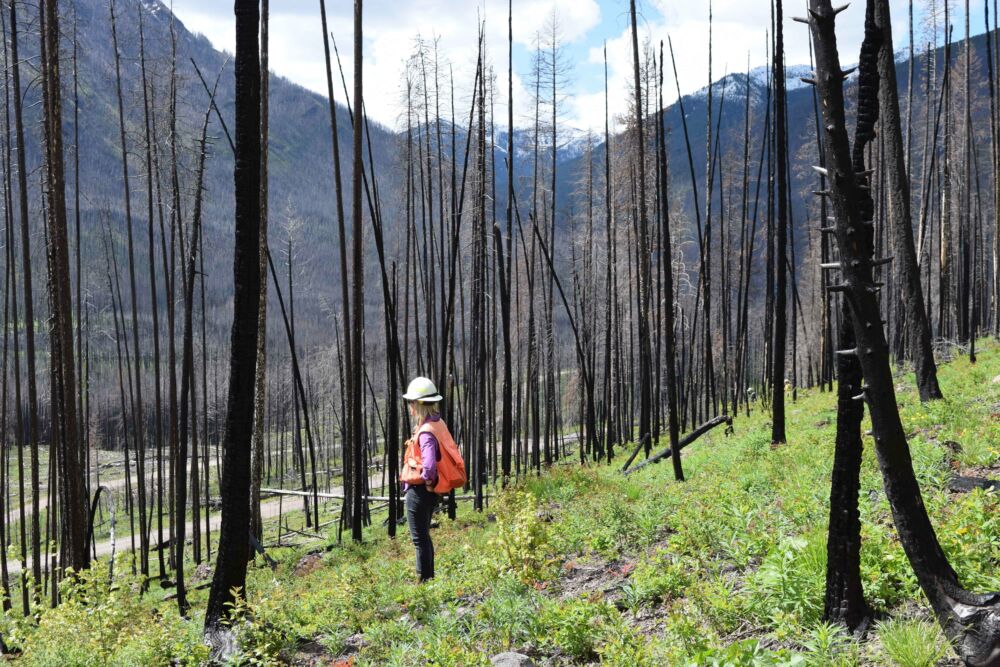
Photo by NFF
The Forest Service sources native seeds from healthy forests near the area to be planted. Sometimes climbing high into trees to obtain the seeds, the Forest Service collects cones from the same species that they plan to plant, and from the same elevation. Cones are then broken down to extract seeds.
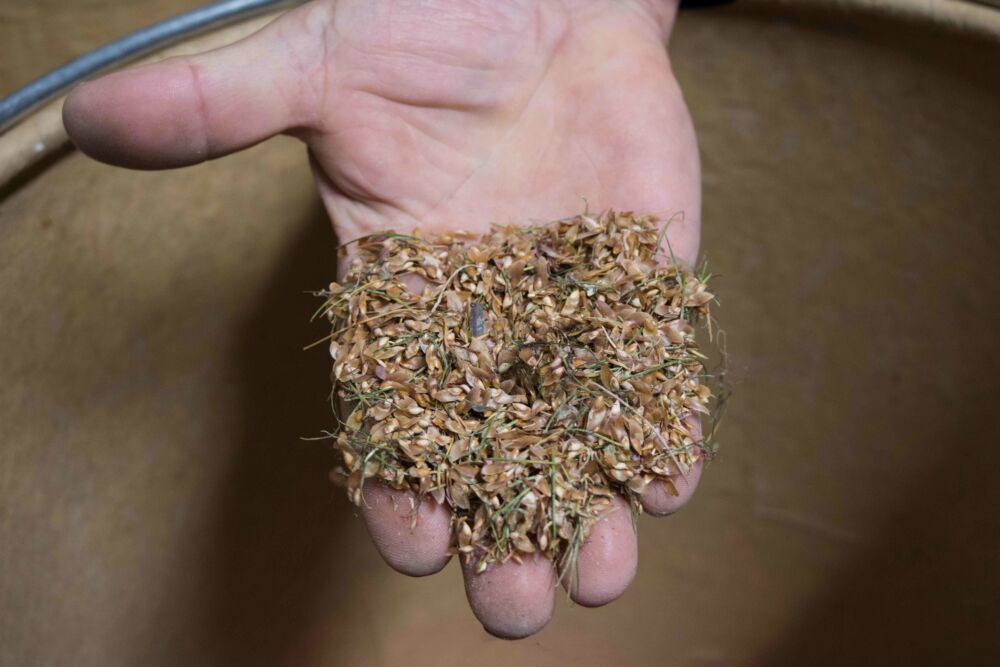
Photo by NFF
After the Forest Service collects seeds, they transport them to one of six Forest Service nurseries located across the country. Here, professionals grow them under climate- controlled conditions that mimic their natural environment.
Seedlings are typically grown until they are 1-2 years old, although some species require more time. Once seedlings reach a sufficient age, they are transported back to forest for planting.
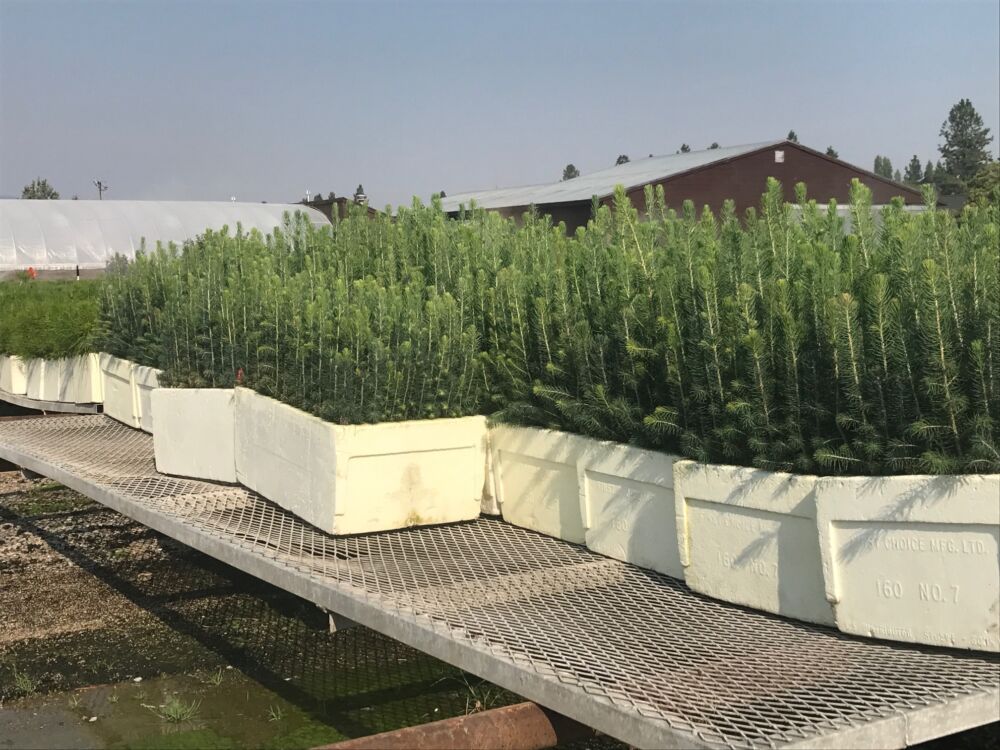
The Forest Service then transports the seedlings back to the forest in a refrigerated cooler until the morning that they are planted. Professional tree planting crews fill up their hip bags with hundreds of seedlings at once, and trek across hillsides to plant seedlings.
To give a better chance at survival, seedlings are often planted in what are called “microsites” – tucked in shaded areas that protect the seedling from direct sun exposure and offer more soil moisture.
Using specialized tools, planters dig a small, deep hole in the ground. Seedlings are carefully placed in the hole, making sure the root structure is intact and covering the opening with soil.
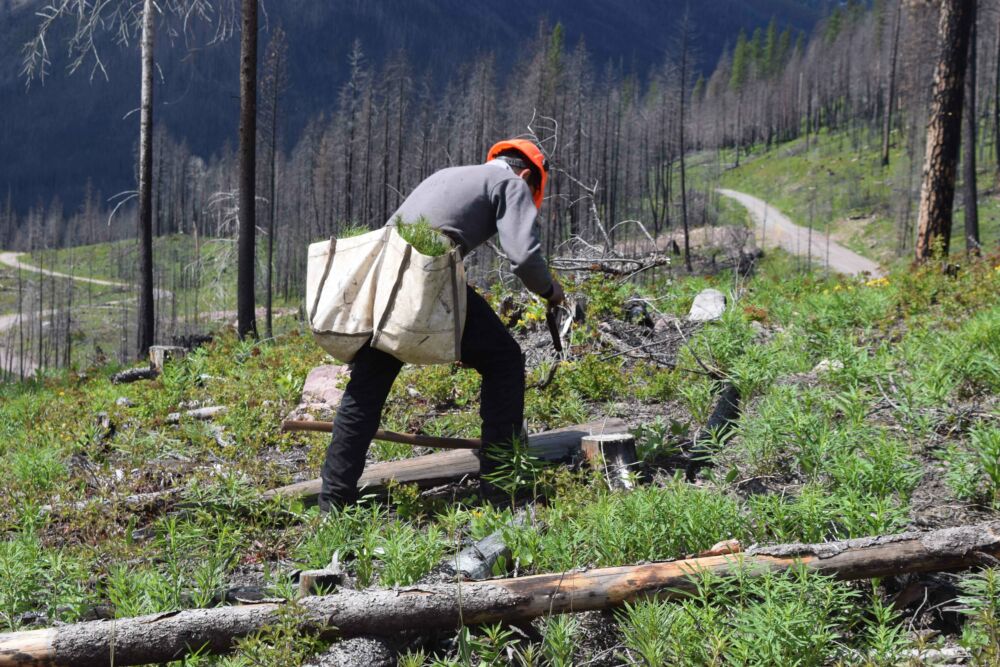
Photo by NFF
To ensure that seedlings were planted correctly, the Forest Service will randomly select young seedlings and dig them up to confirm the crews used the proper planting technique.
As seedlings mature, the Forest Service monitors them after one, three and sometimes five years of planting to ensure survival.
In some areas, maintenance activities (like scraping away competing vegetation) are necessary to ensure seedlings survive into the future.
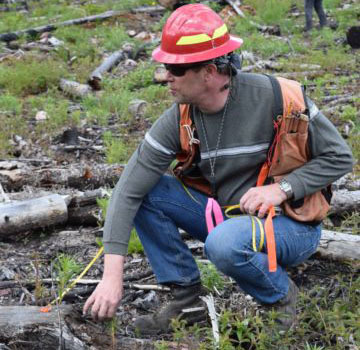
Photo by NFF